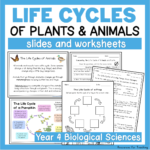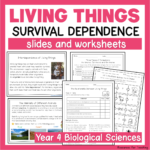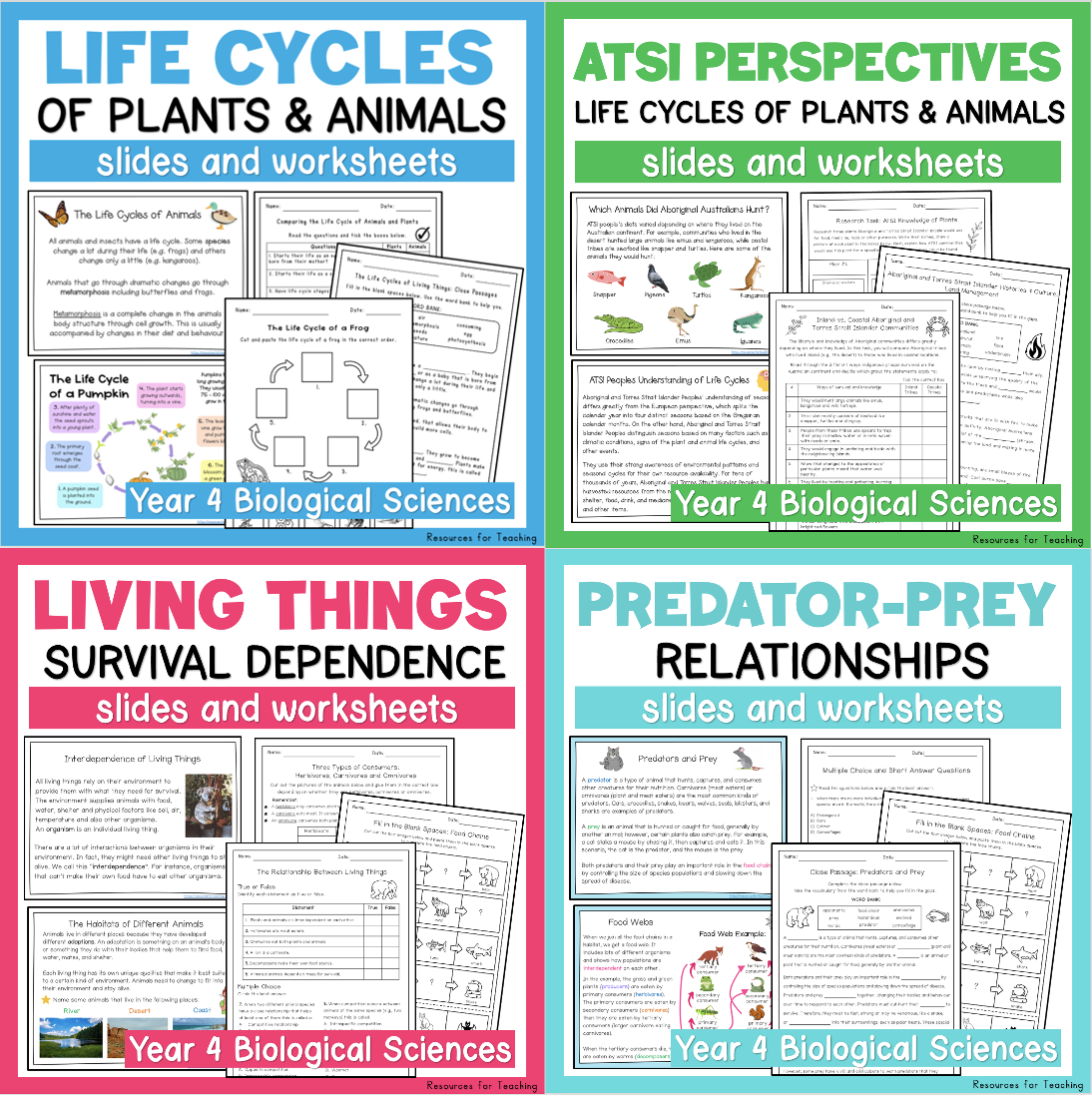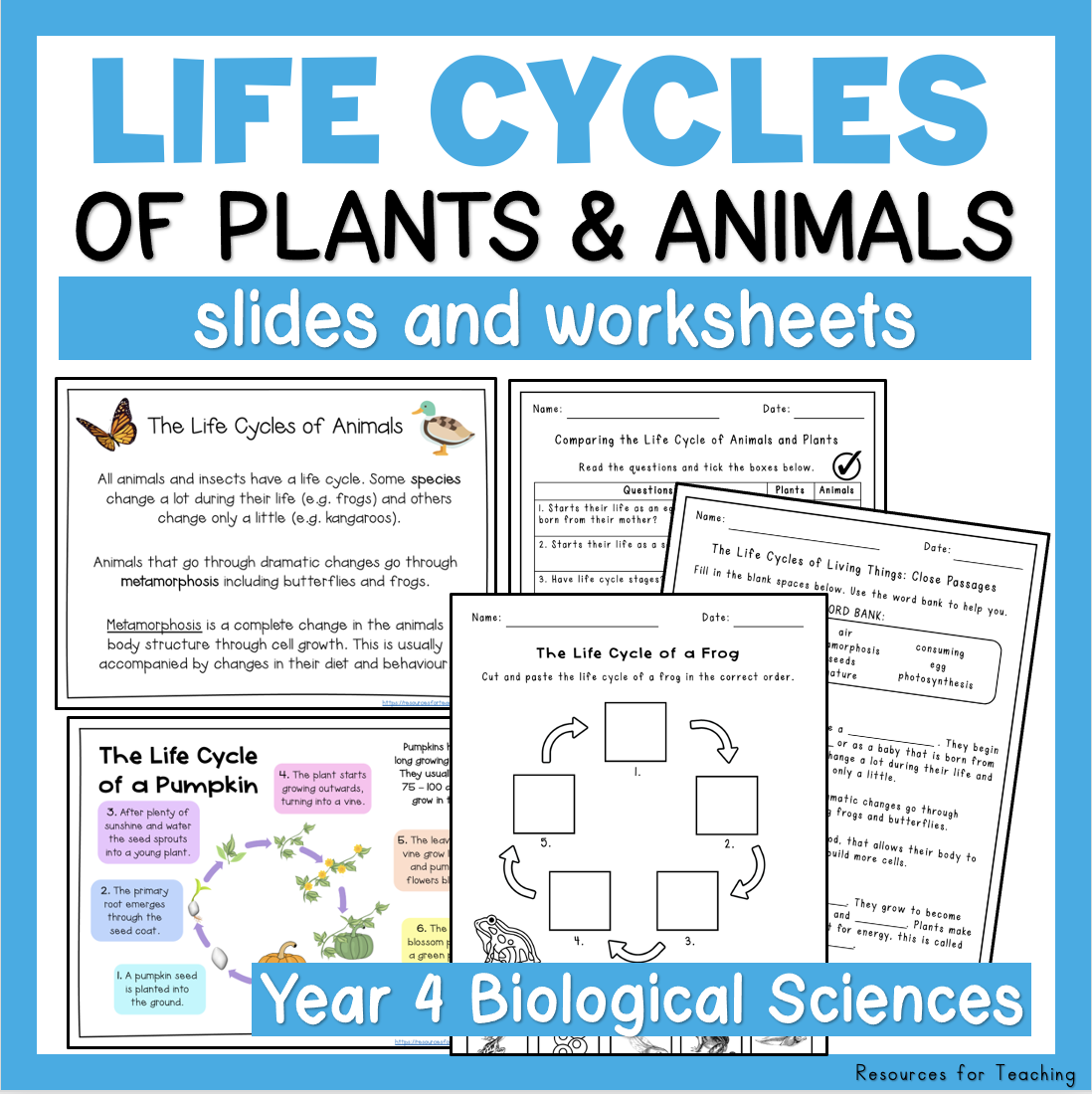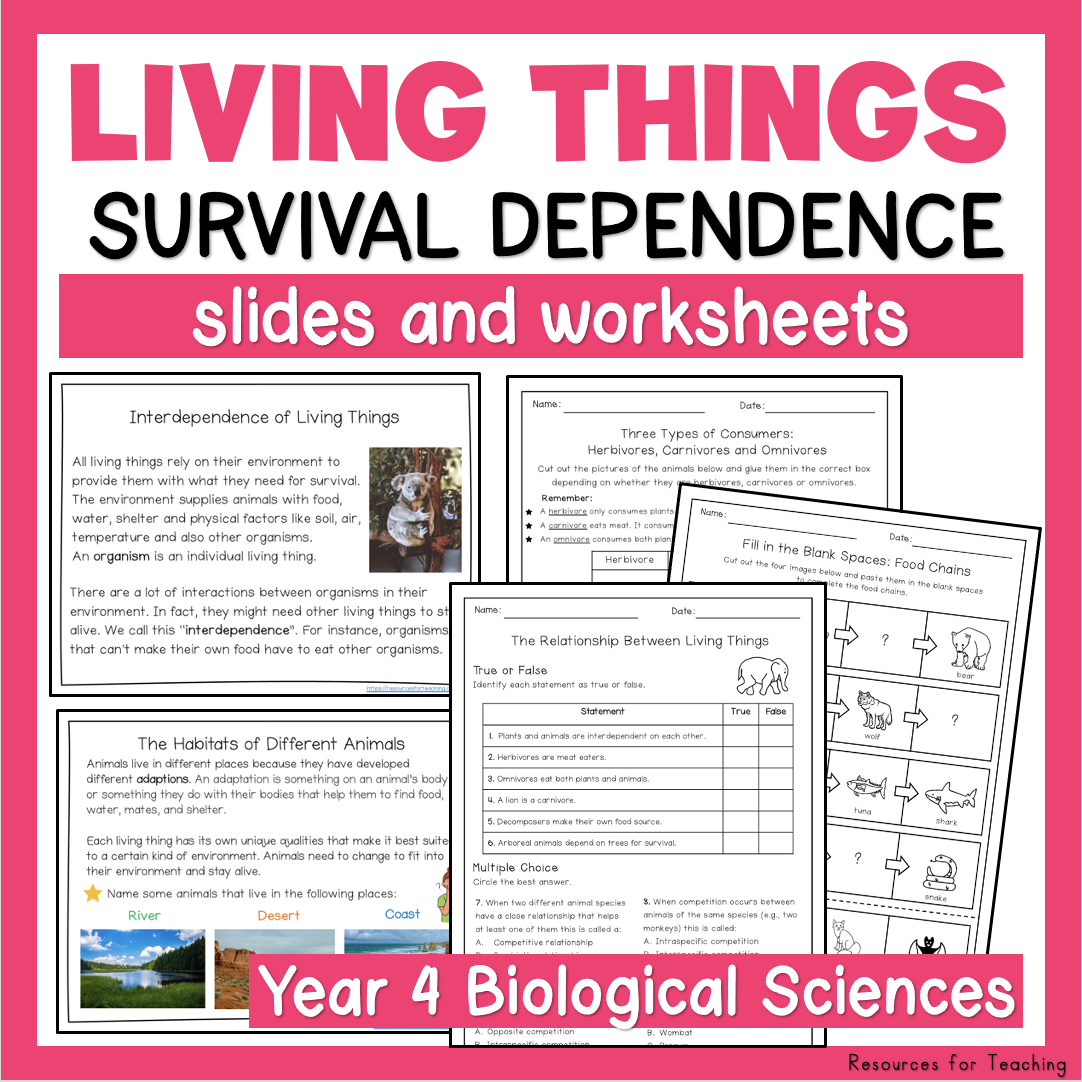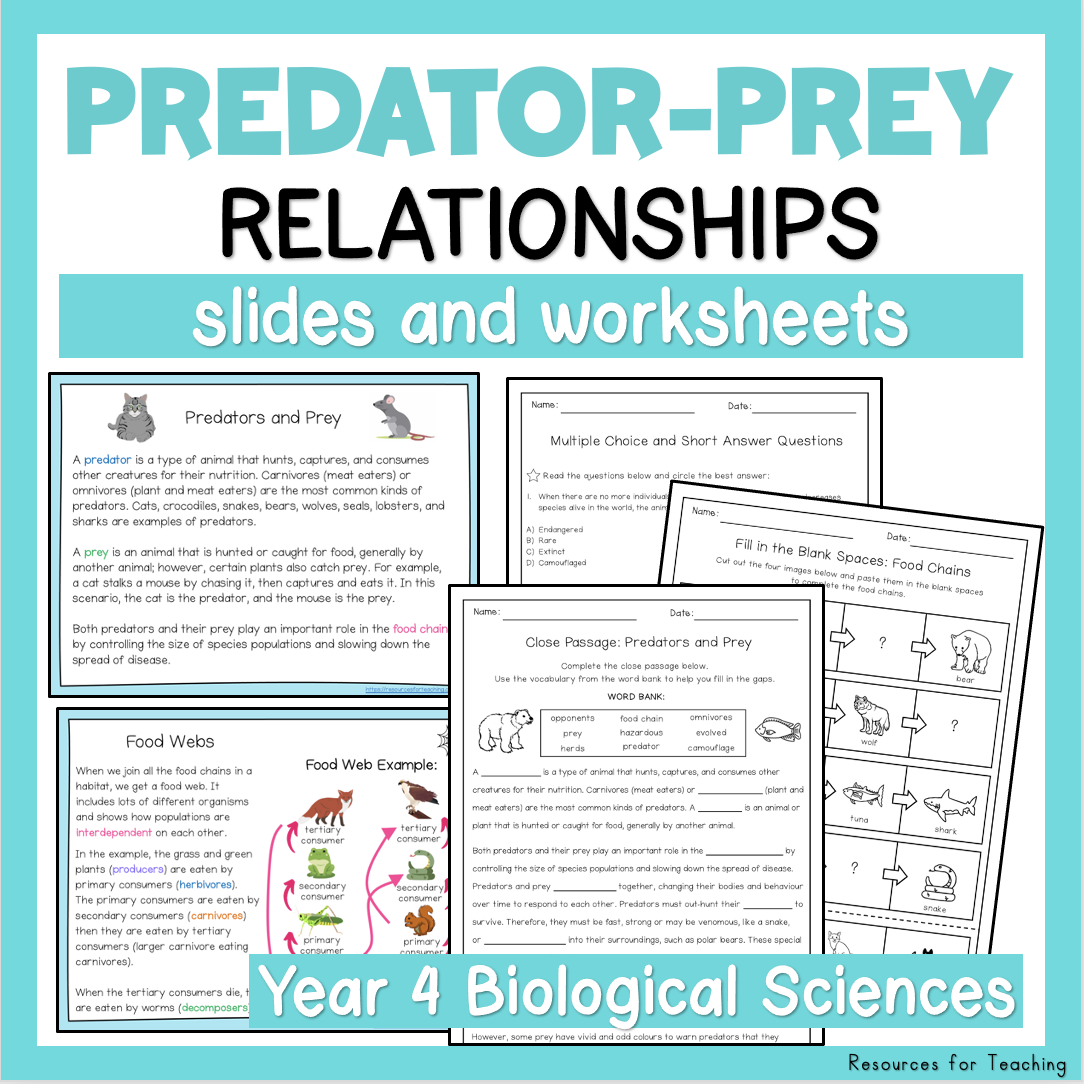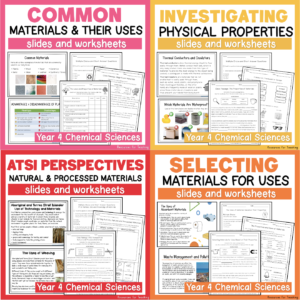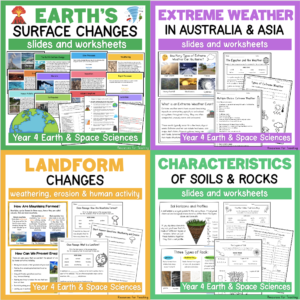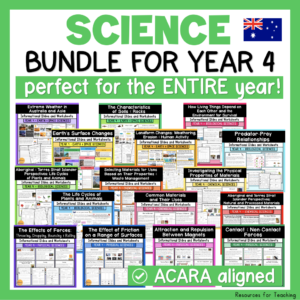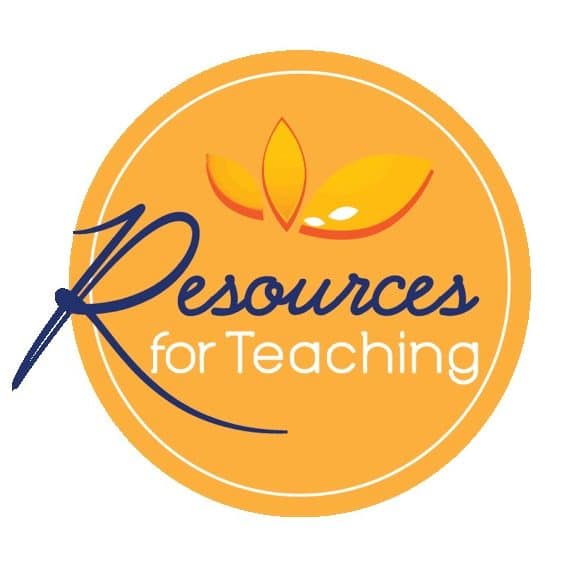Description
Resources included in this bundle:
1. The Life Cycle of Living Things Slides & Worksheets-
This resource includes 17 informational slides and 4 worksheets that cover the following topics-
Students will learn:
- How living things develop through their life cycles
- How the life cycles of animals of plants are similar and different
- That some animals go through dramatic changes (metamorphosis) and others change only a little
- The life cycle stages of various animals, insects and plants (frogs, ladybugs, chickens, kangaroos, sunflowers, tomatoes and pumpkins)
Information covered in the informational slides:
- What is a life cycle?
- The life cycles of animals
- The life cycle of a frog
- The life cycle of a ladybug
- The life cycle of a chicken
- The life cycle of a kangaroo
- The life cycle of plants
- The life cycle of a sunflower
- The life cycle of a tomato
- The life cycle of a pumpkin
- Comparing the life cycles of plants and animals (side by side)
- 10 true or false ‘check your understanding’ questions with answers
- Vocabulary definitions at the end of the slides
The worksheets include:
Worksheet 1: Comparing the Life Cycle of Animals and Plants Tick Box Activity
Worksheet 2: The Life Cycles of Living Things: Close Passages
Worksheet 3: Cut and Paste Activity: The Life Cycle of a Frog
Worksheet 4: Cut and Paste Activity: The Life Cycle of a Pumpkin
✓ An answer key is included for easy marking!
2. Aboriginal and Torres Strait Islander Perspective: Life Cycles & Land Management Slides & Worksheets-
This resource includes 14 informational slides and 4 worksheets that cover the following topics-
Students will learn:
- How Aboriginal and Torres Strait Islander communities utilised the life cycles of different plant and animal species
- Aboriginal and Torres Strait peoples relationship with plants and animals
- Land management techniques such as firestick farming and cool burns
- Environmental factors can affect life cycles such as fire and seed germination
- Aboriginal and Torres Strait Islanders perception of being an integral part of the environment
Information covered in the informational slides:
- Indigenous Australians And Their Relationship With Nature
- Their Relationship With Animals
- Which Animals Did Aboriginal Australians Hunt?
- Their Relationship With Plants
- The Silver Wattle (Acacia Dealbata)
- Plants Eaten for Nutrition
- Plants Used as Medicine
- Firestick Farming
- Cultural Burning
- Land Management
- ATSI Peoples Understanding of Life Cycles
- ATSI Peoples Understanding of Insects: Moths
- ATSI People as an Integral Part of the Environment
The worksheets include:
Worksheet 1: Aboriginal and Torres Strait Islander Histories & Culture: Land Management (Close Passage)
Worksheet 2: Inland vs. Coastal Aboriginal and Torres Strait Islander Communities –
Worksheet 3: Research Task: ATSI Knowledge of Animals
Worksheet 4: Research Task: ATSI Knowledge of Plants
✓ An answer key is included for easy marking!
3. How Living Things Depend on Each Other and the Environment Slides & Worksheets-
This resource includes 17 informational slides and 4 worksheets that cover the following topics-
Informational Slides Address the Following:
- The Habitats of Different Animals ( River, Desert, Coastal)
- The Interdependence of Living Things
- Symbiosis Vs. Competition
- The Relationship Between Plants and Animals
- How Trees Provide Shelter for Animals
- The Relationship Between Owls and Trees
- The Roles of Living Things in a Habitat: Producers, Consumers & Decomposers
- Three Types of Consumers: Herbivores, Carnivores, Omnivores
The worksheets include:
1. Close Passage Task: The Roles of Living Things in a Habitat
2. Word Sorting Task: Producer, Consumer or Decomposer
3. True or False & Multiple Choice Questions: The Relationship Between Living Things
4. Picture Sorting Task: Herbivores, Carnivores and Omnivores
✓ An answer key is included for easy marking!
4. Predator-Prey Relationships Slides & Worksheets-
This resource includes 20 informational slides and 4 worksheets that cover the following topics-
Students will learn about:
- Different types of predators and prey
- How predators and prey play an important role in the food chain
- How predators and prey have adapted and evolved over time
- Food chains and food webs
- The impact of endangerment and extinction
- How plants can be both plants and predators
- How some relationships can be mutually beneficial and others are competitive
Information covered in the informational slides:
- What is a predator and prey?
- Predator-prey scenarios
- Predator-prey adaptations and evolution
- Food chains
- Food webs
- What happens when species in a food chain goes extinct?
- The grey wolf- disrupted and damaged food chains
- How predator-prey relationships affect population
- Plants as prey and predators
- The Venus fly trap – plants as predators
- Mutually beneficial relationships
- Competitive relationships
- Vocabulary definitions at the end of the slides
The worksheets include:
Worksheet 1: Predators and Prey Close Passage
Worksheet 2: Food Chains Cut and Paste Activity
Worksheet 3: Predator-Prey Multiple Choice and Short Answer Questions
Worksheet 4: Mutually Beneficial Relationships and Competitive Relationships Draw and Caption Task
✓ An answer key is included for easy marking!


